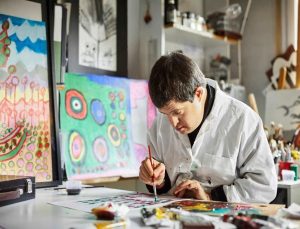
You may find the following tips useful as we all strive to make education inclusive for persons with disability. Have fun, reading!
Ensure Accessibility: Arrange for physical adaptations to the classroom and school that allow students with disabilities to enter, move around, and participate in activities alongside their peers. This could include adding ramps or elevators, providing assistive technology such as wheelchairs or hearing aids, or making changes to the curriculum to accommodate different learning styles.
Promote Positive Attitudes: Make sure everyone at the school understands that inclusion is a positive goal and works towards creating an environment of acceptance and respect for all students regardless of ability level. Educating staff members on disability awareness can help create an inclusive atmosphere where everyone feels comfortable being themselves without fear of judgement or discrimination.
Develop Individualized Education Plans (IEPs): IEPs are individualized plans developed by teachers, parents/guardians, administrators, therapists/specialists and other professionals that outline specific goals for each student based on his or her unique needs and abilities These plans should be regularly updated so they reflect any changes in a student’s educational needs over time.
Utilize Assistive Technology: Assistive technology refers to devices such as computers with speech output software or text-to-speech programs which can help students with disabilities better access information from textbooks and other materials used in class It also includes tools such as adapted keyboards which allow those who have difficulty typing due to physical impairments more easily use computers By utilizing these types of technologies schools can ensure their classrooms are more accessible for students with special needs.

Involve Parents & Guardians: Involving parents/guardians when developing IEPs is important since they know their child best They can provide valuable insight into what kind of supports may be most beneficial as well as how best to modify instruction so it meets their child’s unique needs Additionally involving them in regular communication about progress will help ensure everyone stays up-to-date on any changes made throughout the year.
Create a Positive Learning Environment: Establishing an inclusive learning environment requires an approach that is welcoming and respectful of all students, including those with disabilities. This can be achieved by creating a safe, supportive atmosphere in the classroom where all students feel welcome and respected.
Incorporate Accommodations & Modifications: Schools should provide accommodations and modifications to ensure that each student has access to the same educational opportunities as their peers without disabilities. Examples of accommodations include providing large-print materials for visually impaired students or allowing extra time for tests or assignments for students with physical impairments or learning disabilities.
Provide Inclusive Extracurricular Activities: Students with disabilities often struggle socially because they are excluded from extracurricular activities due to their disability–related needs; however, schools can make sure these activities are accessible so everyone can participate regardless of ability level. For example, if sports teams aren’t wheelchair accessible, schools could provide alternative forms of exercise such as yoga classes or adaptive sports leagues specifically designed for people with physical impairments who require specialized equipment and instruction to participate safely and successfully in athletic activities alongside their peers without disabilities.


